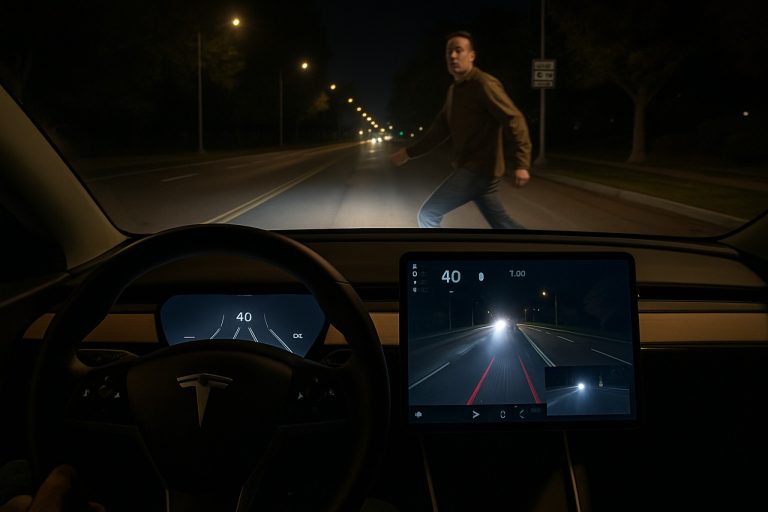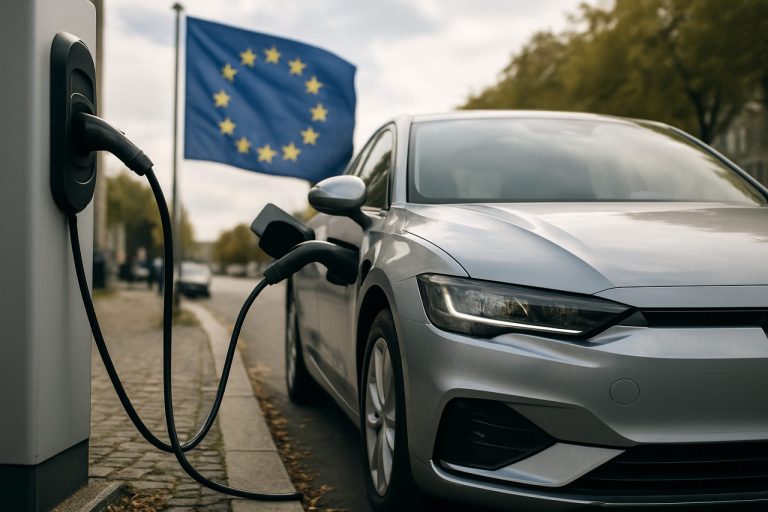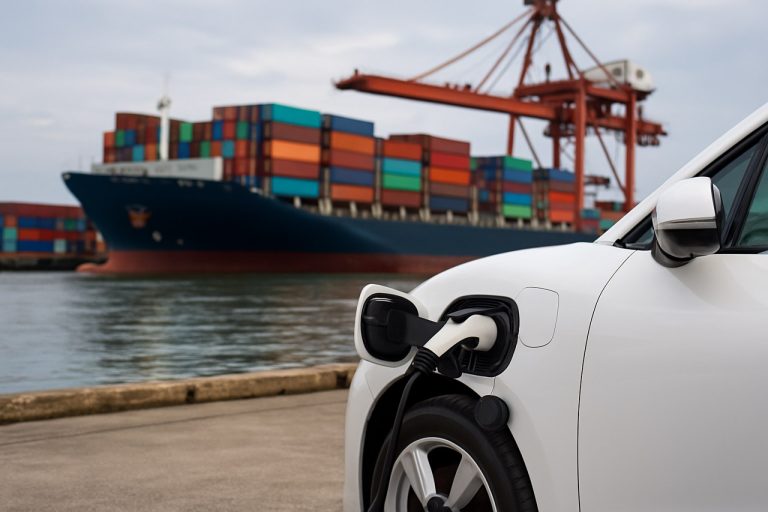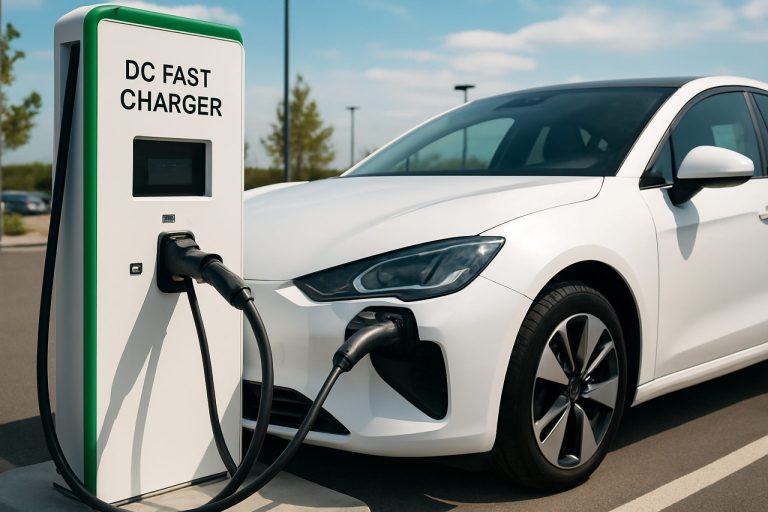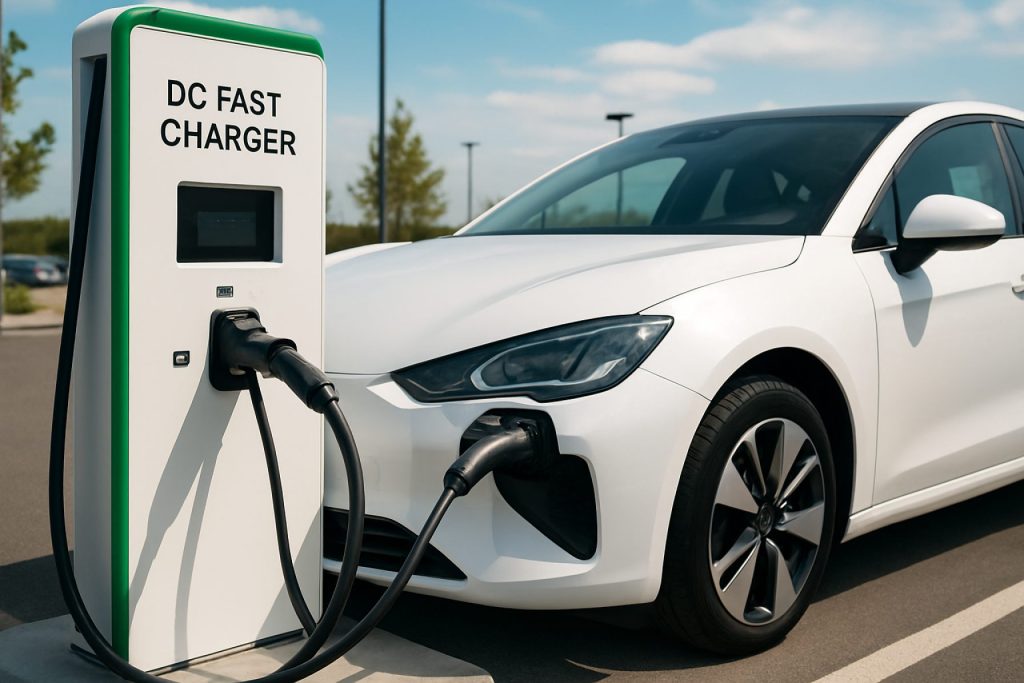
DC Fast Charger Manufacturers in 2025: Who’s Leading the Charge in Rapid EV Infrastructure Expansion? Explore Market Growth, Breakthrough Technologies, and the Competitive Landscape Shaping the Next Five Years.
- Executive Summary: Key Trends and 2025 Outlook
- Market Size, Growth Rate, and Forecasts (2025–2030)
- Major DC Fast Charger Manufacturers: Profiles and Strategies
- Technological Innovations: Power Ratings, Cooling, and Smart Features
- Global Regulatory Landscape and Standards (e.g., CCS, CHAdeMO, NACS)
- Supply Chain, Raw Materials, and Manufacturing Challenges
- Competitive Analysis: Market Share and Strategic Partnerships
- Deployment Trends: Urban, Highway, and Fleet Applications
- Sustainability, Grid Integration, and Energy Management
- Future Outlook: Opportunities, Risks, and Disruptive Forces
- Sources & References
Executive Summary: Key Trends and 2025 Outlook
The DC fast charger manufacturing sector is experiencing rapid transformation in 2025, driven by surging electric vehicle (EV) adoption, evolving charging standards, and significant investments from both established players and new entrants. As governments worldwide intensify decarbonization efforts and automakers accelerate electrification, the demand for high-power, reliable, and widely accessible DC fast charging infrastructure is at an all-time high.
Key manufacturers are scaling up production and innovating to meet diverse market needs. ABB remains a global leader, leveraging its extensive experience in power and automation to deliver high-capacity chargers compatible with multiple standards (CCS, CHAdeMO, and increasingly NACS). The company is expanding its manufacturing footprint in Europe, North America, and Asia to address regional demand surges. Siemens is also a major force, focusing on modular, scalable DC fast charging solutions and collaborating with utilities and fleet operators to integrate chargers with smart grid technologies.
In the United States, Tesla continues to expand its proprietary Supercharger network while opening select sites to non-Tesla vehicles, reflecting a broader industry shift toward interoperability. Meanwhile, Blink Charging and EVgo are rapidly deploying new DC fast charging stations, often in partnership with automakers and retail chains, to enhance public charging accessibility.
Asian manufacturers are asserting a growing presence. Delta Electronics and Star Charge are expanding exports and forming joint ventures to supply advanced DC fast chargers to global markets. These companies are investing in R&D to improve charging speeds, energy efficiency, and network management capabilities.
A defining trend for 2025 is the convergence of charging standards, with the North American Charging Standard (NACS) gaining traction among automakers and charger manufacturers. This is prompting manufacturers to develop multi-standard chargers to future-proof installations and support a wider range of vehicles.
Looking ahead, the DC fast charger manufacturing landscape is expected to remain highly dynamic. Key growth drivers include government incentives, stricter emissions regulations, and the electrification of commercial fleets. Manufacturers are likely to focus on higher power outputs (350 kW and above), improved reliability, and seamless integration with renewable energy and energy storage systems. Strategic partnerships, vertical integration, and digital services (such as remote diagnostics and payment solutions) will further differentiate leading players as the market matures.
Market Size, Growth Rate, and Forecasts (2025–2030)
The global market for DC fast charger manufacturers is poised for robust growth between 2025 and 2030, driven by accelerating electric vehicle (EV) adoption, government incentives, and expanding charging infrastructure mandates. As of 2025, the market is characterized by a mix of established multinational corporations and innovative regional players, each vying to capture a share of the rapidly expanding demand for high-power charging solutions.
Key industry leaders include ABB, a Swiss-Swedish multinational recognized for its comprehensive portfolio of DC fast charging solutions, including high-capacity chargers up to 600 kW. Siemens is another major player, offering scalable fast charging systems and digital services for network management. Delta Electronics, headquartered in Taiwan, is notable for its modular, high-efficiency DC chargers deployed globally. BYD, a leading Chinese EV and battery manufacturer, also produces DC fast chargers, particularly for commercial and fleet applications. Tesla continues to expand its proprietary Supercharger network, which remains a benchmark for high-speed charging, especially in North America, Europe, and China.
In 2025, the DC fast charger market is estimated to be worth several billion USD, with annual installations expected to exceed 500,000 units globally. The Asia-Pacific region, led by China, is the largest market, followed by Europe and North America. China’s aggressive infrastructure rollout, supported by companies like State Grid Corporation of China and Star Charge, is a significant growth driver. In Europe, the expansion of pan-European networks by IONITY—a joint venture of major automakers—continues to accelerate deployment of ultra-fast chargers along key corridors.
Looking ahead to 2030, the market is projected to maintain a compound annual growth rate (CAGR) in the double digits, fueled by stricter emissions regulations, the phase-out of internal combustion engine vehicles in several countries, and the proliferation of high-capacity EVs requiring faster charging. Manufacturers are investing in next-generation technologies, such as 800V and 1000V architectures, to support ultra-fast charging and grid integration. Strategic partnerships between automakers, utilities, and charger manufacturers are expected to intensify, further consolidating the market and driving innovation.
Overall, the period from 2025 to 2030 will see DC fast charger manufacturers scaling up production, expanding global footprints, and introducing advanced solutions to meet the evolving needs of the electrified transport sector.
Major DC Fast Charger Manufacturers: Profiles and Strategies
The global DC fast charger market is rapidly evolving as electric vehicle (EV) adoption accelerates, with leading manufacturers scaling up production, innovating in charging technology, and forging strategic partnerships. As of 2025, several key players dominate the landscape, each with distinct strategies and product portfolios tailored to meet the surging demand for high-power, reliable, and networked charging solutions.
Tesla, Inc. remains a pivotal force, operating one of the world’s largest proprietary fast-charging networks. Its Supercharger stations, now in their fourth generation, deliver up to 250 kW and are increasingly being opened to non-Tesla vehicles in select markets, reflecting a shift toward interoperability and broader market reach. Tesla’s vertical integration—from charger design to network management—enables rapid deployment and consistent user experience, positioning it as both a manufacturer and infrastructure operator (Tesla, Inc.).
ABB Ltd. is a global leader in industrial technology and a major supplier of DC fast chargers, with installations in over 80 countries. ABB’s Terra series supports charging rates up to 350 kW and is known for modularity, scalability, and advanced connectivity features. The company’s focus on open standards and digital services, such as remote monitoring and diagnostics, aligns with the growing need for smart, networked charging infrastructure. ABB’s partnerships with automakers, utilities, and governments underpin its strategy to expand in both public and fleet charging segments (ABB Ltd.).
Siemens AG leverages its expertise in electrification and digitalization to offer high-power DC fast chargers, including the Sicharge D series, which supports up to 300 kW. Siemens emphasizes interoperability, grid integration, and sustainability, with solutions designed for urban, highway, and commercial fleet applications. The company’s investments in software platforms and energy management systems reflect a holistic approach to e-mobility infrastructure (Siemens AG).
EVBox Group, headquartered in the Netherlands, is a prominent European manufacturer with a global footprint. Its Troniq Modular and Troniq High Power lines deliver up to 400 kW, targeting high-traffic corridors and commercial sites. EVBox’s strategy centers on modularity, upgradability, and open protocols, supporting seamless integration with various payment and management systems (EVBox Group).
Other significant manufacturers include Delta Electronics, Inc., known for its high-efficiency power electronics and scalable charging solutions, and BYD Company Ltd., which integrates charging hardware with its EV ecosystem, particularly in Asia. Eaton Corporation plc and Phoenix Contact GmbH & Co. KG are also expanding their presence, focusing on grid-friendly, high-reliability chargers.
Looking ahead, the DC fast charger market is expected to see intensified competition, with manufacturers investing in higher power outputs (up to 500 kW), improved user interfaces, and enhanced cybersecurity. Strategic alliances, standardization efforts, and integration with renewable energy and storage systems will shape the sector’s trajectory through 2025 and beyond.
Technological Innovations: Power Ratings, Cooling, and Smart Features
The landscape of DC fast charger manufacturing is rapidly evolving in 2025, driven by technological innovations that address the growing demands of electric vehicle (EV) adoption worldwide. Key manufacturers are focusing on increasing power ratings, enhancing cooling systems, and integrating advanced smart features to improve efficiency, reliability, and user experience.
One of the most significant trends is the escalation of power ratings. Leading manufacturers such as ABB, Siemens, and Delta Electronics are now offering DC fast chargers capable of delivering 350 kW or more, enabling ultra-fast charging for next-generation EVs. These high-power chargers are designed to reduce charging times to under 20 minutes for compatible vehicles, a critical factor for mass EV adoption and the electrification of commercial fleets.
To support these higher power levels, manufacturers are investing in advanced cooling technologies. Liquid cooling systems are becoming standard in high-capacity chargers, as they efficiently dissipate heat generated during rapid charging sessions. Phoenix Contact and Eaton have developed liquid-cooled charging cables and connectors, which not only ensure safety and longevity but also allow for thinner, more flexible cables that improve user ergonomics.
Smart features are another area of rapid innovation. Modern DC fast chargers are increasingly equipped with connectivity and software-driven capabilities. Tesla continues to expand its Supercharger network with chargers that offer real-time monitoring, dynamic load management, and seamless integration with vehicle navigation systems. Similarly, ABB and Siemens are deploying chargers with remote diagnostics, predictive maintenance, and support for open communication protocols such as OCPP (Open Charge Point Protocol), facilitating interoperability across networks.
Looking ahead, manufacturers are also exploring bi-directional charging (V2G, or vehicle-to-grid) and integration with renewable energy sources. Companies like Wallbox are piloting DC fast chargers that can both charge and discharge energy, supporting grid stability and enabling new business models for energy management.
As the EV market matures through 2025 and beyond, DC fast charger manufacturers are expected to further push the boundaries of power delivery, safety, and digital intelligence, ensuring that charging infrastructure keeps pace with the rapid evolution of electric mobility.
Global Regulatory Landscape and Standards (e.g., CCS, CHAdeMO, NACS)
The global regulatory landscape and standards for DC fast charging are rapidly evolving, directly shaping the strategies and product portfolios of leading DC fast charger manufacturers. As of 2025, the industry is witnessing a convergence of charging standards, with Combined Charging System (CCS), CHAdeMO, and the North American Charging Standard (NACS) at the forefront. These standards are not only technical specifications but also reflect regional policy priorities and automaker alliances, influencing which manufacturers gain market share in different geographies.
In Europe, CCS has become the de facto standard, driven by regulatory mandates and the widespread adoption by European automakers. The European Union’s Alternative Fuels Infrastructure Regulation (AFIR), effective from 2025, requires the deployment of CCS-compatible chargers along major transport corridors, compelling manufacturers to prioritize CCS in their product lines. Leading European manufacturers such as ABB and Siemens have responded by offering high-power CCS chargers, often exceeding 350 kW, to meet both regulatory requirements and the needs of next-generation electric vehicles.
In North America, the regulatory landscape is in flux due to the rapid adoption of NACS, originally developed by Tesla and now increasingly supported by major automakers. In 2023 and 2024, several automakers announced plans to adopt NACS, prompting manufacturers like Blink Charging and BTC POWER to introduce NACS-compatible hardware. The U.S. government’s National Electric Vehicle Infrastructure (NEVI) program, while initially focused on CCS, is now accommodating NACS, signaling a dual-standard environment for the near future. This regulatory flexibility is pushing manufacturers to develop multi-standard chargers capable of supporting CCS, NACS, and, in some cases, CHAdeMO.
CHAdeMO, once dominant in Japan and parts of Asia, is gradually being phased out in favor of newer standards. However, Japanese manufacturers such as Takamisawa and Toshiba continue to support CHAdeMO, especially for legacy vehicles and specific markets. The CHAdeMO Association remains active in updating the protocol, but its global influence is waning as CCS and NACS gain traction.
Looking ahead, the next few years will likely see further harmonization of standards, with manufacturers investing in modular, software-upgradable platforms to future-proof their offerings. Companies like ABB and Siemens are at the forefront of this trend, integrating advanced communication protocols and grid management features to comply with evolving regulations and support smart charging initiatives. The regulatory push for interoperability and open standards is expected to intensify, compelling all major DC fast charger manufacturers to maintain flexibility and rapid innovation in their product development strategies.
Supply Chain, Raw Materials, and Manufacturing Challenges
The supply chain and manufacturing landscape for DC fast charger manufacturers in 2025 is shaped by a confluence of rapid demand growth, evolving technology standards, and persistent global logistics challenges. As electric vehicle (EV) adoption accelerates, manufacturers are under pressure to scale production while navigating shortages in critical components and raw materials.
Key players such as ABB, Siemens, Delta Electronics, Eaton, and BYD have expanded their manufacturing footprints to meet surging global demand. ABB has invested in new production lines in Europe and North America, aiming to localize supply and reduce lead times. Siemens has similarly increased its capacity, focusing on modular designs to streamline assembly and adapt to regional requirements. Delta Electronics leverages its vertically integrated supply chain to mitigate risks associated with semiconductor and power electronics shortages, which have been a persistent bottleneck since the early 2020s.
Raw material sourcing remains a critical challenge. The production of high-power DC fast chargers relies heavily on semiconductors, advanced power modules, copper, and rare earth elements. Ongoing disruptions in the global semiconductor supply chain, exacerbated by geopolitical tensions and natural disasters, have led manufacturers like Eaton to diversify their supplier base and invest in long-term contracts. Copper price volatility and supply constraints have also prompted companies to explore alternative materials and recycling initiatives.
Manufacturers are increasingly adopting digital supply chain management tools and predictive analytics to enhance resilience. BYD, with its extensive experience in battery and electronics manufacturing, has implemented real-time monitoring systems to track inventory and supplier performance, reducing the risk of production delays.
Looking ahead, the outlook for DC fast charger manufacturing is cautiously optimistic. While demand is expected to remain robust through 2025 and beyond, the sector’s ability to scale will depend on continued investment in local manufacturing, strategic partnerships with raw material suppliers, and the adoption of flexible, modular production techniques. Industry leaders are also collaborating with standards organizations to ensure interoperability and future-proofing of new installations, which is expected to further streamline manufacturing and deployment processes in the coming years.
Competitive Analysis: Market Share and Strategic Partnerships
The competitive landscape for DC fast charger manufacturers in 2025 is characterized by rapid expansion, strategic alliances, and a race for technological leadership. The market is dominated by a handful of global players, with several regional manufacturers gaining prominence through innovation and partnerships. As electric vehicle (EV) adoption accelerates worldwide, the demand for high-power, reliable, and interoperable DC fast charging solutions is intensifying, prompting manufacturers to scale up production and form strategic collaborations.
Among the global leaders, ABB continues to hold a significant market share, leveraging its extensive portfolio of DC fast chargers and its presence in over 100 countries. ABB’s Terra series, supporting up to 350 kW, is widely deployed across Europe, North America, and Asia, and the company has secured high-profile partnerships with automakers and charging network operators. In 2024 and 2025, ABB has expanded its manufacturing capacity and deepened collaborations with utilities and fleet operators to accelerate infrastructure rollout.
Another major player, Siemens, has strengthened its position through both organic growth and joint ventures. Siemens’ VersiCharge and Sicharge product lines are increasingly adopted in public and commercial charging networks. The company’s strategic partnerships with automotive OEMs and energy providers have enabled it to integrate smart grid capabilities and offer turnkey charging solutions, further consolidating its market share.
In the United States, Tesla remains a dominant force, particularly with its proprietary Supercharger network. However, Tesla’s recent moves to open its charging standard (NACS) to other manufacturers and collaborate with third-party charging providers are reshaping the competitive dynamics. This openness is expected to drive interoperability and increase utilization of Tesla’s infrastructure by non-Tesla EVs, potentially boosting its market influence.
Asian manufacturers are also making significant inroads. Delta Electronics and Star Charge are expanding their global footprint, supplying high-power DC fast chargers to both domestic and international markets. Delta’s focus on modular, scalable solutions and Star Charge’s emphasis on integrated energy management are differentiating factors in their growth strategies.
Strategic partnerships are a defining feature of the current market. Manufacturers are collaborating with automakers, utilities, and charging network operators to ensure compatibility, streamline deployment, and secure long-term contracts. For example, ABB and Siemens have both announced alliances with major automotive groups to co-develop next-generation charging technologies. Meanwhile, regional players are forming consortia to standardize protocols and accelerate infrastructure buildout.
Looking ahead, the competitive landscape is expected to remain dynamic, with market share influenced by technological innovation, supply chain resilience, and the ability to forge effective partnerships. As governments and industry stakeholders push for rapid electrification, DC fast charger manufacturers that can deliver reliable, high-performance, and interoperable solutions will be best positioned to capture growth in the coming years.
Deployment Trends: Urban, Highway, and Fleet Applications
The deployment of DC fast chargers is accelerating across urban centers, highway corridors, and fleet depots, driven by the rapid electrification of passenger vehicles, commercial fleets, and public transit. In 2025, leading manufacturers are scaling up production and diversifying their portfolios to address the distinct requirements of each application segment.
In urban environments, the focus is on compact, high-throughput DC fast chargers that can be integrated into dense cityscapes and support high vehicle turnover. ABB remains a dominant player, offering modular DC fast charging solutions tailored for public parking, retail, and mixed-use developments. Siemens is also expanding its urban charging infrastructure, emphasizing interoperability and smart grid integration to manage peak loads and support city sustainability goals. Tesla continues to expand its proprietary Supercharger network in metropolitan areas, now increasingly opening access to non-Tesla vehicles in select markets.
Highway deployment trends are characterized by ultra-fast charging systems (150 kW and above) designed for long-distance travel and minimal dwell times. Electrify America (a subsidiary of Volkswagen Group of America) is a key force in the U.S., operating one of the largest open DC fast charging networks along major interstate routes. EVgo is similarly expanding its high-power charging stations at highway rest stops and travel plazas, often in partnership with automakers and retail chains. European manufacturers such as IONITY—a joint venture of BMW Group, Ford, Hyundai, Mercedes-Benz, and Volkswagen Group—are rapidly building out pan-European highway charging corridors, supporting both CCS and, increasingly, NACS connectors.
Fleet applications, including last-mile delivery, ride-hailing, and public transit, demand robust, scalable DC fast charging solutions capable of supporting high utilization rates and vehicle diversity. BYD and Proterra are notable for their integrated vehicle and charging solutions for electric buses and commercial vehicles, with depot charging systems optimized for overnight and opportunity charging. BP (through its BP Pulse division) and Shell are investing heavily in fleet-focused charging hubs, leveraging their global energy infrastructure and partnerships with logistics providers.
Looking ahead, the DC fast charger manufacturing landscape is expected to see continued innovation in power electronics, software integration, and energy management. Manufacturers are increasingly collaborating with utilities, automakers, and urban planners to ensure that charging infrastructure keeps pace with EV adoption and grid modernization efforts. The next few years will likely bring further standardization, higher charging speeds, and greater emphasis on reliability and user experience across all deployment contexts.
Sustainability, Grid Integration, and Energy Management
The rapid expansion of DC fast charger manufacturers is increasingly intertwined with sustainability, grid integration, and advanced energy management strategies as the electric vehicle (EV) market accelerates into 2025 and beyond. Leading manufacturers are not only scaling up production but also embedding technologies that address the environmental and infrastructural challenges posed by mass EV adoption.
A key trend among major players such as ABB, Siemens, and Delta Electronics is the integration of renewable energy sources and energy storage systems with their DC fast charging solutions. These companies are developing chargers capable of dynamically managing loads, optimizing energy use, and reducing peak demand on local grids. For example, ABB’s Terra series incorporates smart energy management features, enabling operators to balance grid loads and integrate solar or wind power directly into charging infrastructure.
Grid integration is a focal point for manufacturers as utilities and governments push for greater resilience and flexibility. Siemens is actively collaborating with grid operators to deploy chargers that support vehicle-to-grid (V2G) and demand response capabilities, allowing EVs to act as distributed energy resources. This approach not only stabilizes the grid during peak periods but also opens new revenue streams for charger operators and EV owners.
Sustainability is further advanced through the use of recycled materials, modular designs for easier upgrades, and lifecycle management programs. Delta Electronics emphasizes eco-friendly manufacturing processes and the deployment of chargers with high energy efficiency ratings, reducing the overall carbon footprint of EV infrastructure.
Looking ahead, the outlook for 2025 and the following years suggests that DC fast charger manufacturers will increasingly be evaluated not just on charging speed or network size, but on their ability to deliver holistic, sustainable solutions. Regulatory frameworks in regions such as the European Union and North America are expected to mandate higher levels of grid interoperability and renewable integration, further driving innovation in this space.
In summary, the leading DC fast charger manufacturers are positioning themselves at the intersection of clean energy, digital grid management, and sustainable product design. Their ongoing investments in smart charging, grid services, and environmentally conscious manufacturing are set to play a pivotal role in shaping the future of e-mobility infrastructure worldwide.
Future Outlook: Opportunities, Risks, and Disruptive Forces
The landscape for DC fast charger manufacturers in 2025 is marked by both significant opportunities and notable risks, as the global transition to electric vehicles (EVs) accelerates. The demand for rapid charging infrastructure is expected to surge, driven by government mandates, automaker commitments to electrification, and consumer expectations for convenient, high-speed charging. Leading manufacturers are positioning themselves to capitalize on this growth, but face challenges from evolving technology standards, supply chain constraints, and intensifying competition.
Key players such as ABB, Siemens, Delta Electronics, and BYD are expanding their global footprints, investing in R&D, and forming strategic partnerships with automakers, utilities, and charging network operators. ABB continues to innovate with modular, high-power chargers and digital management platforms, while Siemens is leveraging its expertise in grid integration and smart infrastructure. Delta Electronics is focusing on scalable, energy-efficient solutions, and BYD is integrating charging with its broader EV ecosystem.
Opportunities abound as governments in North America, Europe, and Asia roll out funding and incentives for public and fleet charging infrastructure. The U.S. National Electric Vehicle Infrastructure (NEVI) program, for example, is catalyzing large-scale deployments, creating a robust pipeline for manufacturers. In Europe, the Alternative Fuels Infrastructure Regulation (AFIR) is setting ambitious targets for charger density and interoperability, further stimulating demand.
However, the sector faces risks from rapid technological change. The emergence of higher-power charging standards (such as 350 kW and above), the adoption of new connector types, and the integration of vehicle-to-grid (V2G) capabilities require manufacturers to remain agile and invest in future-proof designs. Supply chain volatility—particularly for semiconductors and power electronics—remains a concern, potentially impacting production timelines and costs.
Disruptive forces are also at play. New entrants, including vertically integrated automakers and energy companies, are entering the market, challenging traditional manufacturers. The rise of open charging networks and software-driven platforms is shifting value from hardware to services, compelling manufacturers to develop holistic solutions that encompass installation, maintenance, and digital management.
Looking ahead, the most successful DC fast charger manufacturers will be those that can scale production, adapt to evolving standards, and offer integrated, user-centric solutions. Strategic collaborations, continuous innovation, and a focus on reliability and interoperability will be critical as the industry navigates the next phase of electrification.
Sources & References
- ABB
- Siemens
- Blink Charging
- EVgo
- Delta Electronics
- BYD
- Star Charge
- IONITY
- EVBox Group
- Delta Electronics, Inc.
- Eaton Corporation plc
- Wallbox
- BTC POWER
- Toshiba
- Delta Electronics
- Electrify America
- Proterra
- BP
- Shell
